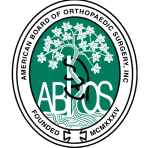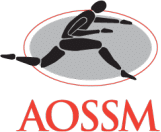WE ARE DEDICATED TO PROVIDING EXCEPTIONAL ORTHOPEDIC CARE & SHOULDER SPECIALIST
15+ Years Of Orthopedic Experience & Shoulder Specialist
Burlingame Orthopedics (BOSMA) has been dedicated to providing the highest level of musculoskeletal care for the local community for over 30+ years.
As a partner at Burlingame Orthopedics, Dr. Marvin Lo has been an integral part of this vision, providing high level care for local athletes in the community as well.

OVERVIEW
Shoulder Conditions and Causes of Pain
Shoulder conditions occur in the shoulder joint which can prevent us from bending, flexing, reaching, or rotating our arms. However, repetitive overhead movements that are common to some sports and jobs frequently overstress the shoulder joints resulting in injury. When problems related to tendon tears, instability, fractures, arthritis, and other conditions impede movement, both surgical and non-surgical treatments are considered to ease pain and help restore movement.
Understanding Shoulder Anatomy
The shoulder is a ball and socket joint. The ball is called the head of the humerus, and the socket is called the glenoid (it’s part of your shoulder blade, also known as the scapula). Sometimes, arthritis can form here. On top of this ball and socket joint is another bone known as the acromion. This is a frequent place for bone spurs to form.
The AC Joint and Common Shoulder Injuries
Right next door to the acromion is the acromioclavicular joint, or AC joint for short. This is a common place for shoulder separations. A group of four muscles helps to move your shoulder joint; they are called the rotator cuff. These muscles work together to help lift your arm overhead, as well as rotate it in and out. That’s why rotator cuff injuries usually result in weakness, especially when trying to raise the arm. One of these four muscles is injured more frequently than the others — the supraspinatus muscle.
Ligaments, Labrum, and Shoulder Stability
In addition, these rotator cuff muscles function to help keep your shoulder “in socket,” or “located.” (When the shoulder comes out of the socket, it’s called a dislocation.) You also have several ligaments in your shoulder that help keep it stable. Finally, there’s an O-ring-shaped structure around the socket called the labrum, which also helps hold your shoulder in place and can cause pain or popping when torn.
When to Seek Shoulder Treatment
At some point in life, you may experience shoulder pain. If pain persists, limits movement, or follows an injury, it’s important to see an orthopedic shoulder specialist for proper diagnosis and treatment.
EXCELLENCE IN ORTHOPEDICS
SHOULDER TREATMENT OPTIONS
Shoulder Common Treatment Options
- Acromioplasty
- Biceps Tendon Rupture Surgery
- Biceps Tenodesis
- Bursitis/Impingement Surgery
- Closed Reduction (Shoulder)
- Labrum Surgery
- Non-Operative Bankart Lesion Treatment
- Non-Operative Biceps Tendon Rupture Treatment
- Non-Operative Broken Collarbone Treatment
- Non-Operative Bursitis/Impingement Treatment
- Rotator Cuff Tears
- Shoulder Arthritis
- Shoulder Dislocation
- Shoulder Impingement Treatment
- Shoulder Pain
- Shoulder Separation
- Superior Labrum Anterior to Posterior Repair (SLAP)
- Throwing Injuries





